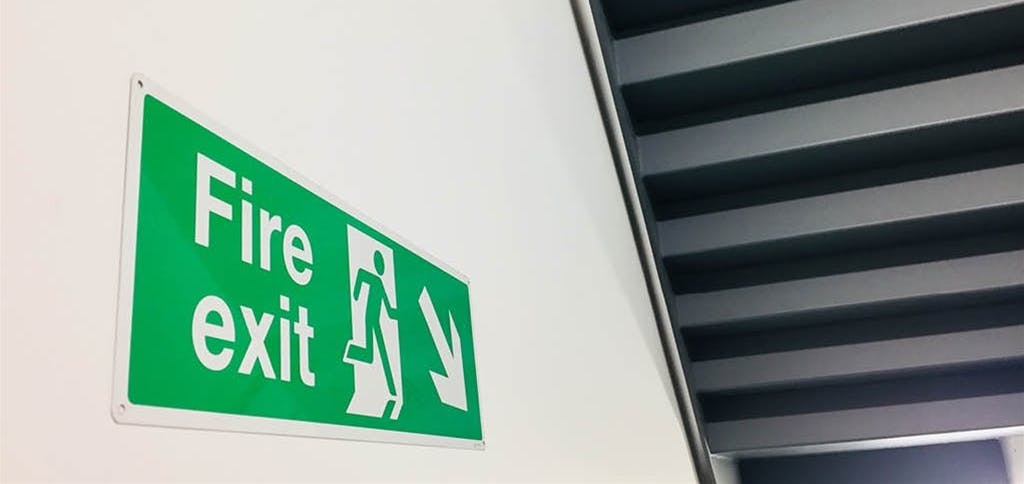Introduction
Clear Safety’s fire safety team has, from its inception, always responded to our clients' particular fire safety compliance requirements. The new build fire safety quality assurance oversight we provide is no different.
Our oversight is not just an inspection visit and report. We believe it to be key as a supporting structure in the chain of design, construction and maintenance of buildings. Working with our clients and their unique requirements, we help to satisfy the building safety regulator and ultimately the information needed from the start of a building’s life, as part of the ‘Golden Thread’.
We understand the importance of sufficient building information and accountability related to fire safety measures taken throughout the life cycle of a building. The oversight we provide at the start of this life cycle is critical and is the start of good building information management.
Our regime will:
- Provide an overview at the design stage to ensure compliance.
- Provide regular oversight during the construction phase, giving assurance of compliant work and raising clear points and actions that require addressing with additional work.
- Provide assurance to the client of a building’s fire safety at the pre-occupation stage.
- Assist with the duties of the client, principal contractors and designers under CDM 2015.
- Mitigate the cost to our clients of expensive remediation work by highlighting issues during the construction phase. Any work required is much cheaper to carry out at this stage rather than as a result of a fire risk assessment some years down the line. This could even be free to a client as it is picked up before handover and completed by the relevant contractor. A final financial saving is through the avoidance of relying on insurance to pick up any remediation expense, which ultimately leads to higher premiums. An obvious case in point is the cladding remediation work being carried out following the enquiry and subsequent reports by Dame Judith Hackett.
- Provide information to assist with the requirements of the Golden Thread.
What we can provide
Pre-construction design reviews
Review of documentation and summary reports with comments and recommendations which can include:
- Fire Statement.
- Written Fire Strategy.
- Proposed plans/drawings.
- Data sheets of proposed active fire protection measures.
- Data sheets of proposed passive fire protection measures.
- Life safety system designer/installer certification/competency.
During construction quality assurance
Site visits to construction projects, which are normally monthly but can be more or less frequent, to inspect work elements such as:
- Cavity barriers.
- Fire protection of structural elements.
- Party wall separations.
- Wiring runs / cable clips.
- Compartmentation.
- Spandrel panels.
- Fire stopping prior to ceiling installation.
- Fire door/frame installation (cross corridor, private, riser or internal).
- Review of PFP specialist installers, certification/competency.
- Review fire safety reports from consultants who are employed by the contractor.
- Each inspection will have a written report on a bespoke template for each client and/or site. The report will provide commentary on what was inspected and where, any non-compliance noted and details of any defects/remediation required. Photographic evidence forms an important part of these reports and over time the reports will form a history of the fire safety construction elements of the building.
- The pre-handover inspection and report is a full visual inspection of all passive and active fire safety systems. This effectively provides a fire safety ‘snagging’ list of all defects to the incumbent contractor and client before the pre-occupation fire risk assessment is carried out. This gives our clients piece of mind that a minimum number of actions are in place before occupation or even stops delays to occupation due to high-risk actions being highlighted.
During handover and pre-occupation compliance
We will assist once the building is due to handover in the following ways:
- Carry out a pre-occupation FRA as required by the Regulatory Reform (Fire Safety) Order 2005.
- Review and comment on Regulation 38 information provided by the contractor/developer.
- Witness testing and inspection of life safety systems, such as fire alarms, lifts and sprinklers installed in the building.
Our reporting system
Your system provides a comprehensive solution for managing and accessing project-specific reports, documentation, and compliance data. Here's a summary of its key features:
- Offline Capabilities and Customisable Templates: The system supports offline use and allows for bespoke report templates tailored to each client and site. Reports can be shared via a link or as a downloadable PDF.
- Automated Report Management: Completed reports are automatically downloaded into the system, where they can be accessed or downloaded as needed.
- Secure Stakeholder Access: Various stakeholders can be granted secure access to the system, ensuring they receive relevant reports and information immediately upon completion.
- Document and Certification Storage: The system can store important project documentation, such as fire strategies, making it easy to refer to these documents in response to queries.
- Integrated Communication: A ‘chat’ function allows stakeholders to raise queries directly within the system, sending an email notification and linking back to the relevant report for quick resolution.
- Audit Trail and Timeline: The system provides an end-to-end audit trail and a detailed timeline of events.
- Golden Thread Compliance: The system can be extended to store ongoing ‘Golden Thread’ information, such as asset data and subsequent fire risk assessments, building a comprehensive history of fire safety compliance.
- Scalability for Other Compliance Data: The system can easily be expanded to include data on other compliance areas, like EICR, Gas Safe, Water Hygiene, and general building information.
This system streamlines report management, enhances communication, and supports compliance tracking across various aspects of a project.
Read more about this in our ‘New Development’ compliance case study




